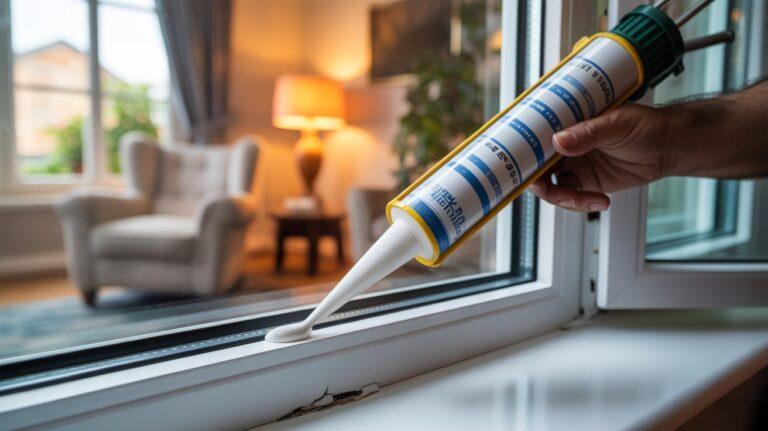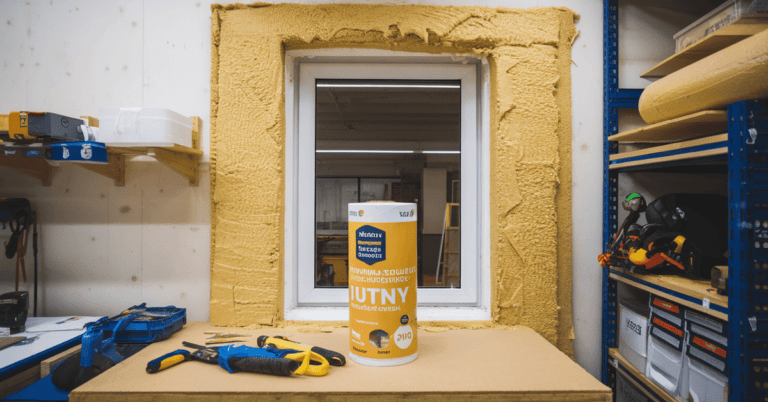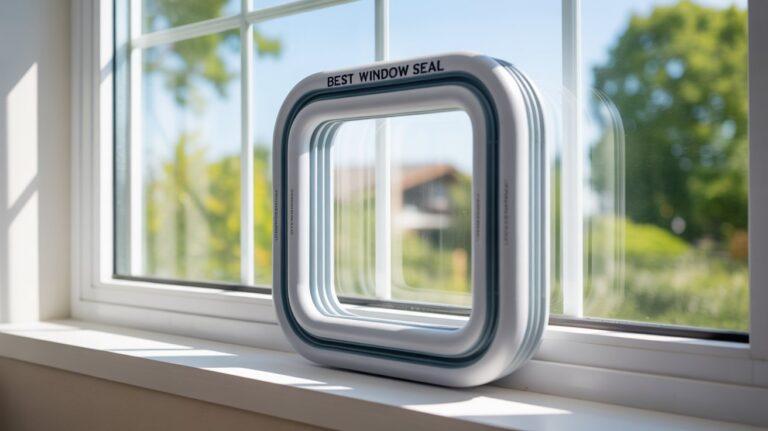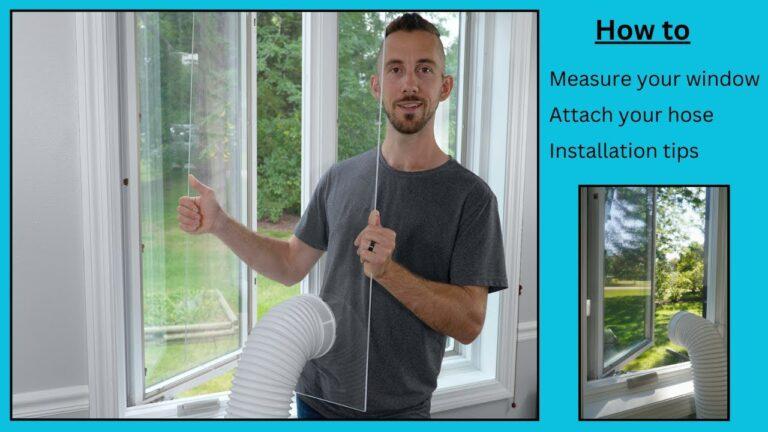How to Seal Plexiglass Window: 4 Easy Steps You Can’t Ignore!
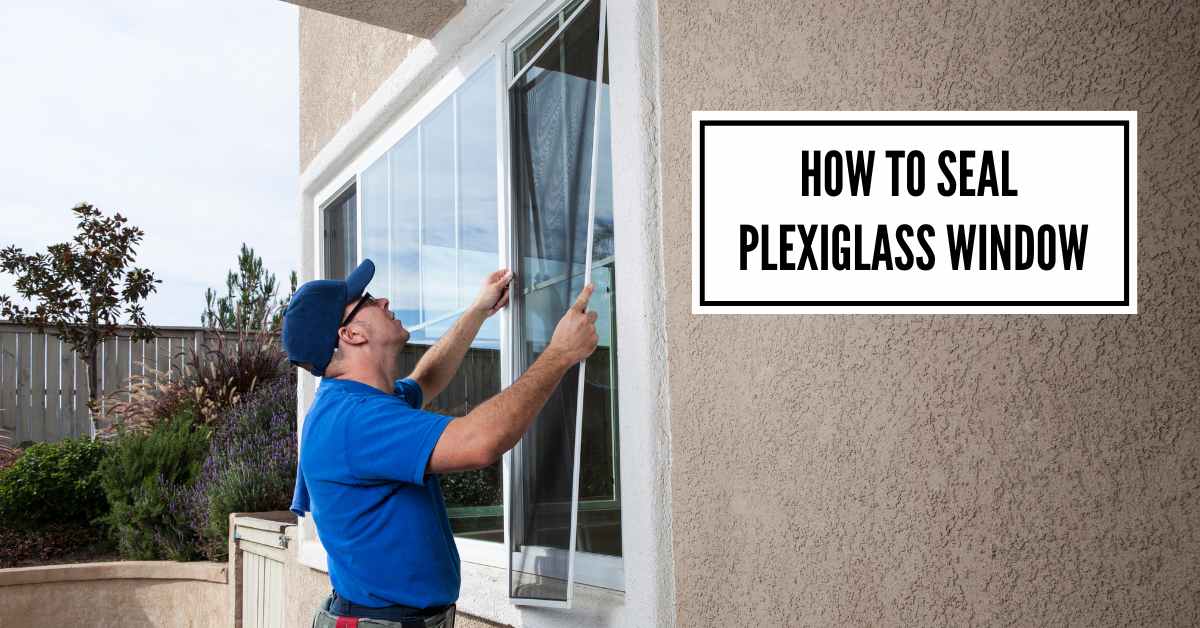
When it comes to strength, reliability, and durability, Plexiglass windows are a better choice than traditional glass windows. This highly transparent glass lets more than 90% of light pass through. Besides, it is incredibly impact- and storm-resistant.
Whether you are using traditional or Plexiglass windows, sealing them is crucial to maintaining a comfortable temperature inside the home. In this article, I will walk you through how to seal Plexiglass windows. Don’t miss it if you are planning to install Plexiglass windows.
What Sealant to Use for Plexiglass Window?
A lot of sealant options are available. But window glazing putty appears to be the best choice to seal the window properly and protect interiors from external elements.
You won’t have to worry about energy efficiency as there will be minimal heating and cooling costs. This special glazing compound will keep the window protected from drafts and leaks.
People mainly use this Plexiglass window seal for wood to prevent air in or out.
Once you apply the window glazing putty, it will ensure instant adhesion. It will make the gaps in the window air-tight, water-tight, and windproof.
However, make sure to wait for at least 5 days before applying any primer or paint. Sometimes, it can be as long as 15 days, depending on the temperature, humidity, and ventilation.
Don’t Let Your Plexiglass Window Ruin Your Day: 4 Steps to a Perfect Seal
Though modern Plexiglass windows are engineered with insulating gases, it is still necessary to seal them properly to eliminate drafts.
Most importantly, a properly sealed Plexiglass window will slowly age. It will also ensure long-lasting durability.
Let’s learn about the procedure to seal a Plexiglass window step-by-step.
Step: 01—Cleaning The Plexiglass Window
Does your Plexiglass window have any dust, dirt, or debris? Make sure it is fully clean and transparent. If there are any old windows with Plexiglass seals, make sure to get them, too.
Use a fresh and soft cloth to wipe any substances from the Plexiglass window. Make it fully transparent.
If there is still dirt, you can use a small amount of mild, soapy water or mineral spirit. Make sure to let it air-dry properly.
Step: 02—Applying Window Glazing Putty
Before applying the window glazing putty, clean the channels or recesses of the window properly. This will help you apply the glazing compound effectively.
Grab a putty knife, add the window glazing putty, and start applying it to the grooves. Avoid using too much at a time.
Add a thin layer of glazing compound into the grooves. Ensure to maintain a continuous and uniform seal around channels or recesses in the window frame.
Step: 03—Install The Plexiglass Window
The next task is installing the Plexiglass window around the perimeter of the window frame.
Make sure to add glazing points on each side of the window. If your Plexiglass window is more than 12 inches, adding an extra point for every eight inches of glass over 12 is necessary.
These push-style points will keep the glass secure in its place against the sash (framework).
Place each glazing point in a horizontal position directly on the Plexiglass surface.
Apply gentle pressure to the tip directed towards the wooden material using the putty knife until it fits securely. But don’t overdo it. The Plexiglass may shatter.
Step: 04—Adding Window Glazing Putty
Once you securely place the Plexiglass window, add window glazing putty to fill the remaining gaps around the grooves.
Use a putty knife to smooth and flatten the glazing compound. This will help you create a neat and clean appearance for your Plexiglass window.
Carefully scrape off any excess glazing putty using the putty knife. Take your time and be gentle to avoid damaging the Plexiglass.
Use a soft cloth to remove any substances of glazing putty from the Plexiglass surface. Let it dry properly. Follow the manufacturer’s instructions for the ideal drying time.
Can I Use Caulk to Seal A Plexiglass Window?
Household owners can use caulks for sealing Plexiglass windows. But caulks are less effective than window glazing putty, especially for thicker Plexiglass windows.
Generally, most homeowners use 1/8″, “3/16″, or “1/4 thick Plexiglass windows. You can use caulk to seal these small gaps in such a case.
But when you want to install a little bit thicker options, such as “3/8″, “1/2″, or “3/4″ expansive Plexiglass windows, it is best to use window glazing putty.
Besides, the adhesion quality of regular caulks may need to be improved due to their elasticity. It may cause cracking or discoloration over time.

If you want a caulk, butyl rubber caulks are the best choice. Innate to butyl rubber is its natural property of displaying minimal permeability to both gases and moisture vapor.
It will ensure the long-lasting durability of your Plexiglass windows and keep them free from fog. This Plexiglass window rubber seal is also highly resistant to humidity, corrosion, and other elements.
Bonus Tips When Sealing Plexiglass Windows
You have already learned a proper way to seal Plexiglass windows using window glazing putty. The following are some bonus tips to make your sealing job more accessible and practical.
1. Utilize A Caulking Gun
Applying the window glazing putty or butyl rubber is a hassle to maintain a consistent bead.
You can utilize a caulking gun. Apart from eliminating any significant grip force, it will ensure a consistent and even placement of a bead of the putty.
2. Say No To Over-Application
Over-application of sealants not only wastes resources but also compromises the effectiveness of the sealant.
Apply a small amount at a time. Then, go for another session if needed. Applying less sealant can lead to messy results.
3. Us A Specialized Smoothing Tool
Don’t think your job is completed after applying the window glazing putty or butyl rubber caulks.
Properly smoothening the sealant is necessary to achieve a neat and professional-looking finish. You can use this specialized smoothing tool, Caulking Finger.

This smoothing tool will ensure good adhesion to the Plexiglass and keep it free from nubs, serrations, and other issues.
4. Let The Window Sealant Dry Properly
Avoid applying primer or paint on the window edges for at least 7 days. It can be as high as 14 days if the temperature, ventilation, and humidity are unfavorable.
Allow the window sealant to dry completely before using any paint. It will ensure proper adhesion of the paint and long-lasting durability.
Follow manufacturer guidelines regarding curing time for the sealant. Avoid stress on the Plexiglass windows until the sealant has fully cured.
FAQ’s
Can I use regular glass sealant on plexiglass windows?
Regular glass sealants may not adhere well to plexiglass. It’s best to use an adhesive specifically designed for acrylic materials.
How often should I inspect my sealed plexiglass windows?
Perform inspections at least once a year, preferably before extreme weather seasons.
Can I paint over the sealant on the plexiglass windows?
Painting over sealant is not recommended, as it can compromise the effectiveness of the seal and the plexiglass’s appearance.
Is plexiglass suitable for extremely cold climates?
Yes, plexiglass is known for its durability in various climates, including cold ones.
Can I seal significant gaps with sealant?
For more significant gaps, it’s advisable to use backer rods or foam backings before applying the sealant.
Should I hire a professional for sealing plexiglass windows?
While it’s possible to DIY, hiring a professional ensures precision and long-lasting results, especially for complex installations.
Final Words
Plexiglass windows can last at least 5-10 years. But its lifespan can be as high as 15-30 years if you install high-quality Plexiglass windows with a proper sealant.
Sealing the Plexiglass windows enables you to enjoy a comfortable and safe environment inside the house. Exterior elements will cause minimal hassles.
I have already instructed how to seal Plexiglass window. This article also covered which sealant is the best choice for Plexiglass windows.

I am Robert Sandin, a professional sealing expert with a diverse range of expertise. From concrete to various other materials, I possess in-depth knowledge and experience in the art of sealing. On my website, I offer valuable tips and expert recommendations on sealing techniques and products for different materials. Whether it’s concrete, wood, metal, or more, I am committed to providing you with the guidance you need for successful sealing projects.

